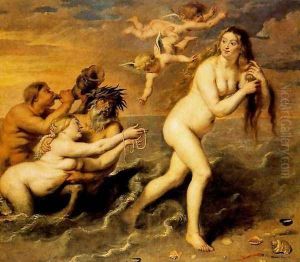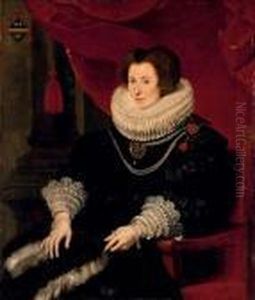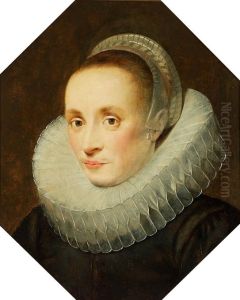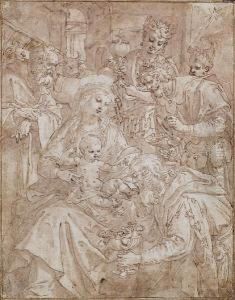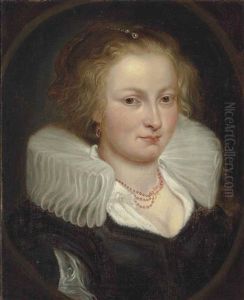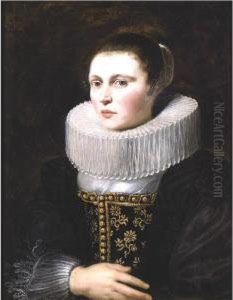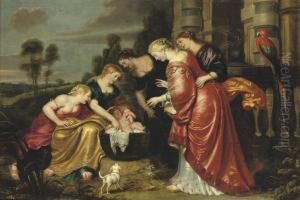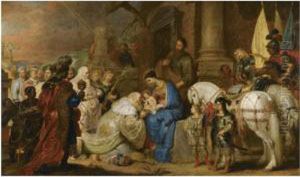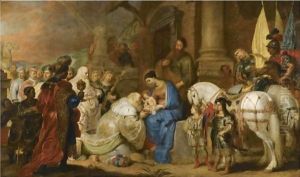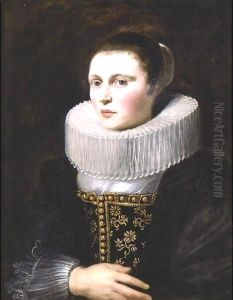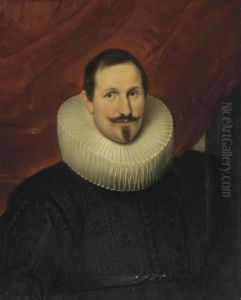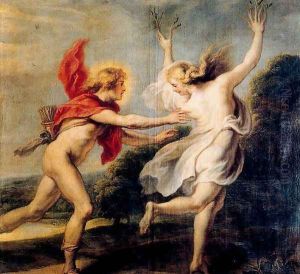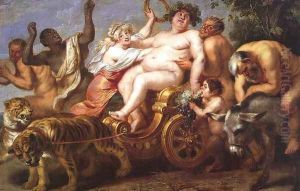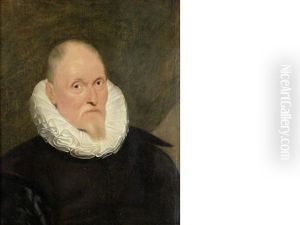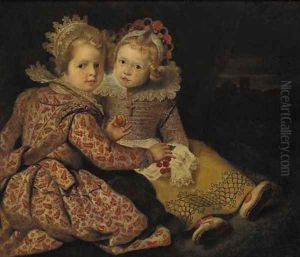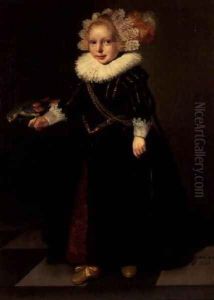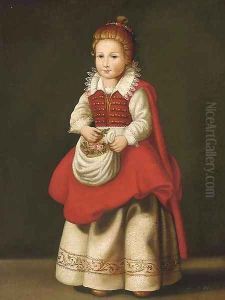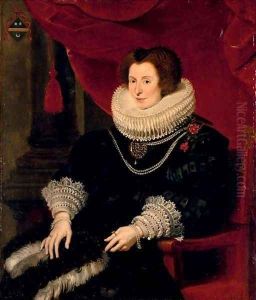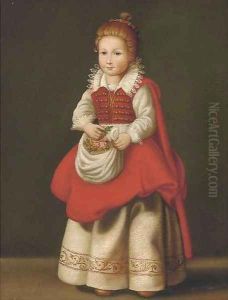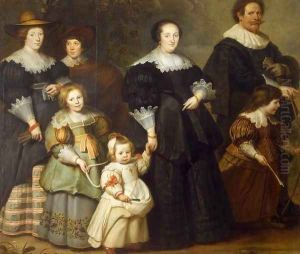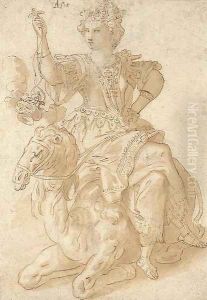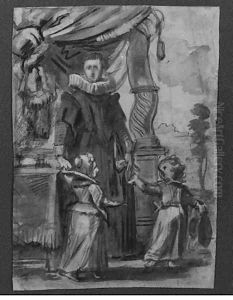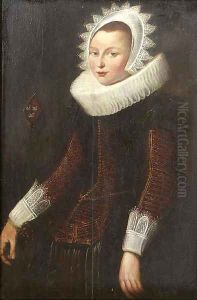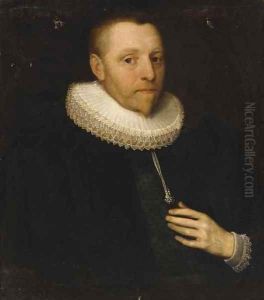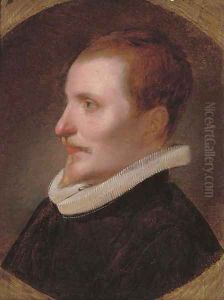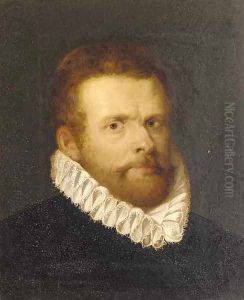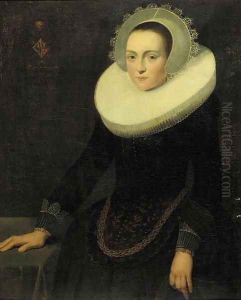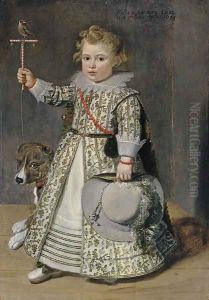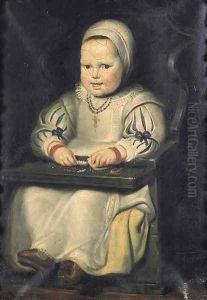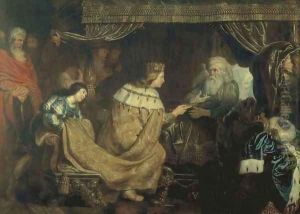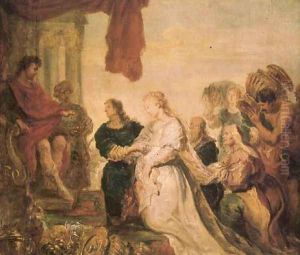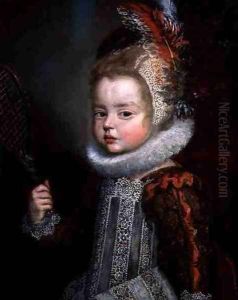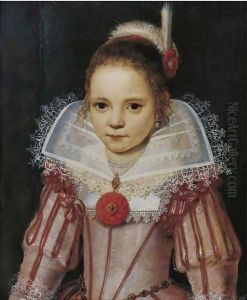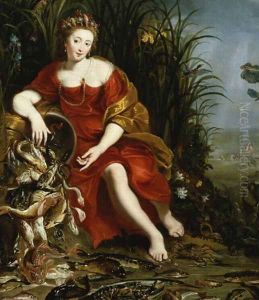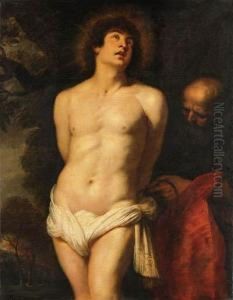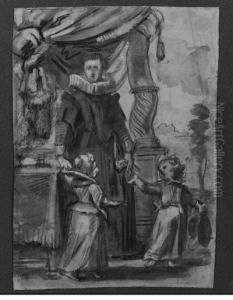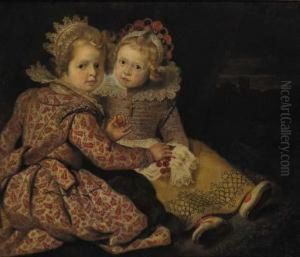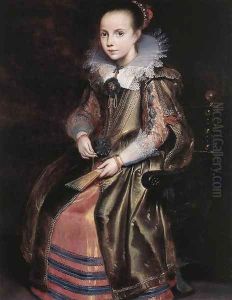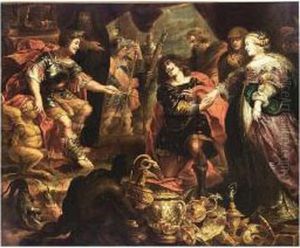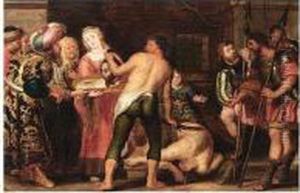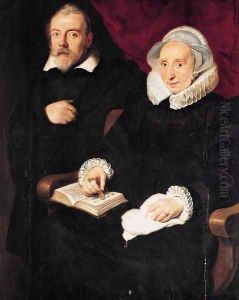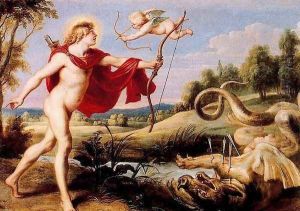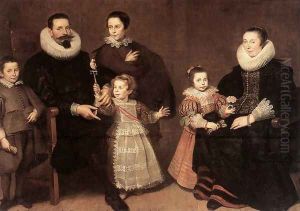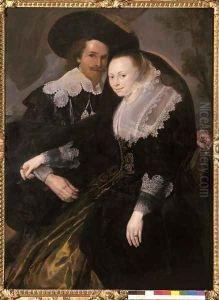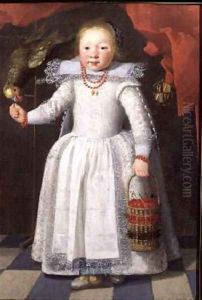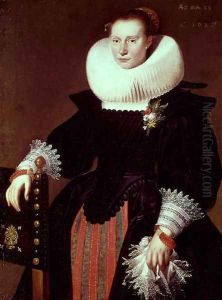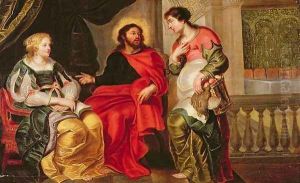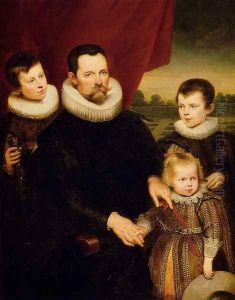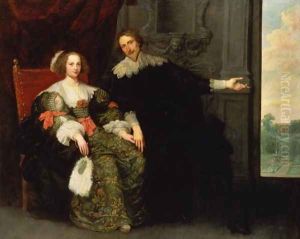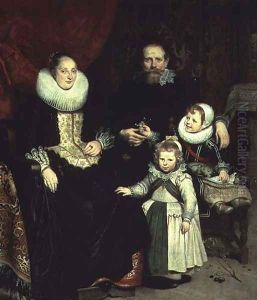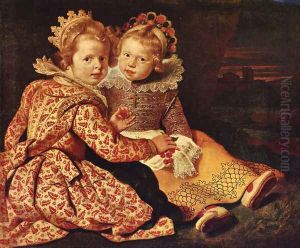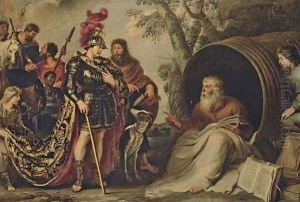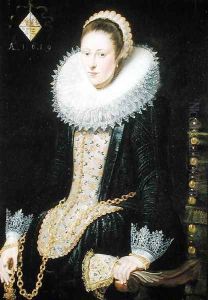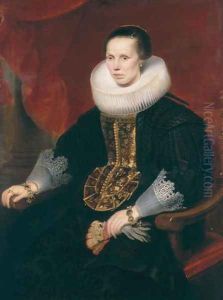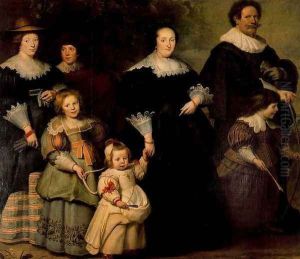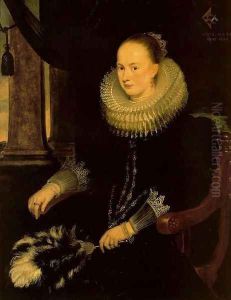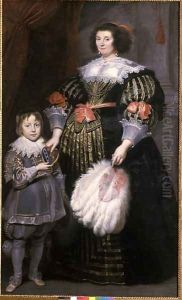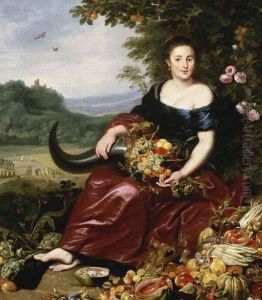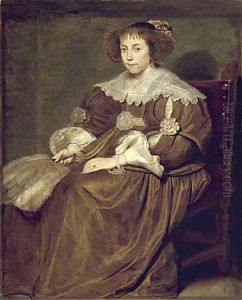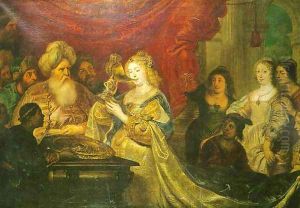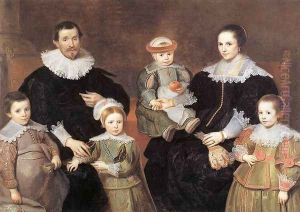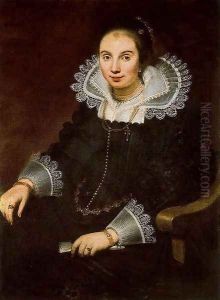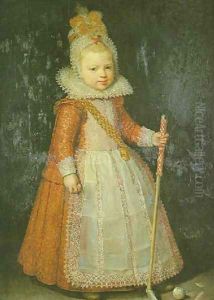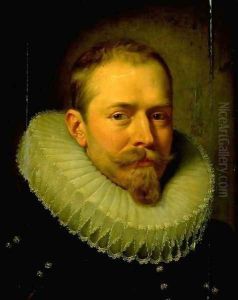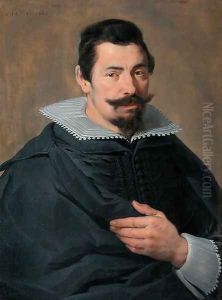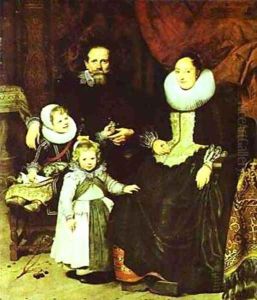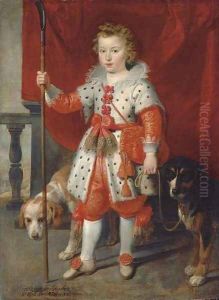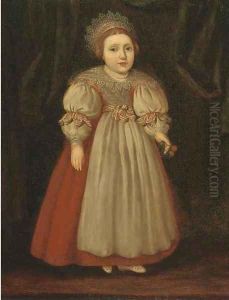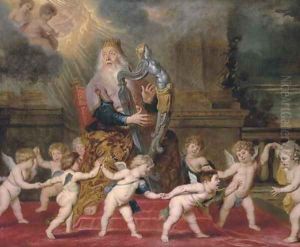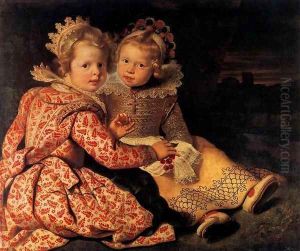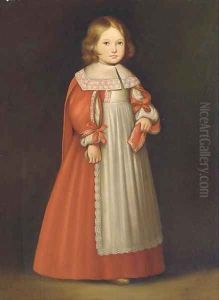Cornelis De Vos Paintings
Cornelis de Vos was a prominent Flemish painter and art dealer born in Hulst, near Antwerp, in 1584. He was one of the leading portraitists of his time in the Southern Netherlands, now known as Belgium. De Vos is particularly renowned for his sensitive and highly detailed portraits of the wealthy and influential citizens of Antwerp, as well as for his portrayals of family groups which are celebrated for their depth of character, warmth, and sophisticated composition.
De Vos apprenticed under David Remeeus in Antwerp, a city that was a major center for the arts in the 17th century. He became a master in the Antwerp Guild of Saint Luke by 1608, indicating his recognition and respect within the artistic community. Throughout his career, Cornelis de Vos was closely associated with Peter Paul Rubens, one of the most influential artists of the Flemish Baroque period. They collaborated on several projects, and de Vos contributed to the execution of Rubens' designs on numerous occasions. This collaboration was mutually beneficial, enhancing de Vos's technique and compositional skills, and in turn, Rubens benefited from de Vos's adeptness at portraying the human figure.
De Vos's work is characterized by its vivid realism and attention to detail. His portraits are noted for their psychological depth and the ability to capture the personality and social stature of his sitters. Beyond portraiture, he also painted mythological and biblical scenes, though these works are less well-known compared to his portraits.
Despite his success, Cornelis de Vos did not gain the same level of international fame as some of his contemporaries, such as Rubens. Nevertheless, his paintings were highly valued during his lifetime, and he was commissioned by many notable clients. De Vos also played a significant role in the Antwerp art scene not only as an artist but also as an art dealer, which was a common practice among artists at the time.
Cornelis de Vos passed away in Antwerp in 1651. Today, his works are preserved in major museums around the world, serving as a testament to his skill and contributing to our understanding of Flemish Baroque art. His legacy is particularly evident in the field of portraiture, where his innovations in the depiction of families and individuals have had a lasting impact.
